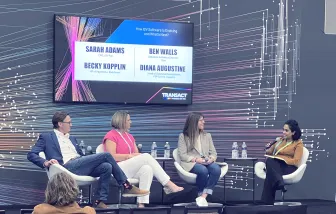What to Consider to Tailor Payment Solutions to Merchants’ Operations
Listen to this article

Merchants are looking for more than just an off-the-shelf PIN pad or payment device. Competitive merchants want payment solutions that give them tools to gain more market share, outpace competitors, and provide unmatched experiences that turn shoppers into loyal customers and brand advocates. However, designing the right payment solution takes a keen understanding of a merchant's industry and the unique way they do business. Remember that a “winning solution” for one merchant will likely not be the ideal fit for another. While all merchants may have similar goals like enhancing customer convenience, streamlining operations, and building a healthier bottom line, how to achieve this will be specific to the merchant. Consider these factors to provide merchants with tailored payment solutions.
Form Factor, Features, and Functionality
When selecting technology to design payment solutions, keep in mind that the merchant's industry and ideal customers should inform choices for features and form factors. Ensure that the solution you build will accommodate:
- Preferred Transaction Types: From fully EMV and contactless payments to alternative payments and mobile wallets, payment card readers must have the versatility to accommodate evolving consumer preferences and emerging technologies.
- Where Customers Checkout: Payment technology must have the capability to accept payments where merchants are selling. A payment device with a small footprint and with the ability to be paired with a smart device, helps accommodate micro-merchants and mobile merchants that accept payments in remote locations like farmstands, pop-up shops, or food truck counters. Other businesses have the need for sales associates in physical stores to bring checkout to the customer whether they are interacting on the sales floor, in fitting rooms, or at the counter. Of course, many merchants will find value in a traditional countertop terminal and PIN pad technology, particularly with more sleek, modern footprints for optimized space and maximized network availability.
- Additionally, some merchants should consider accepting payments with unattended devices, particularly in markets where consumers will prefer the convenience of self-service. From vending to retail, hospitality, EV charging, and more, rugged, tamper-resistant hardware coupled with intuitive UX and seamless integration with other applications help create payment solutions that deliver on consumer expectations while maintaining optimal performance for business operations.
- Value-Added Services: Merchants can gain an edge by enhancing payment experiences with unique features and services. These value-adds can make it easy for customers to easily purchase, redeem, and manage gift cards and earn or redeem loyalty rewards. Merchants can also enhance experiences with digital receipts, currency conversion, and personalized services that link online and in-store shopping for streamlined omnichannel processes like buy online pickup in store (BOPIS).
Meet the Needs of the Industry or Niche
In addition to deploying payment technology that supports how and where customers want to pay, payment solutions must also be designed for the merchant’s industry. For example, a table service restaurant may use a mobile payment device that other types of businesses choose, but the payment solution should be designed to give customers privacy when adding tips. Grocers may find their customers want to accept ACH payments while other retailers may want to accept buy now, pay later (BNPL) payments. As a trusted advisor, leverage your experience with payment solutions for different verticals and deliver the optimal solutions for your clients.
Remember, Every Business Operates in Its Own Way
After you consider form factor, function, and the needs of the vertical or niche, it’s crucial to factor in your client’s specific needs. Listen to their unique challenges and pain points, for example, whether the solution will be easy to learn and use in a business with high employee turnover or will keep up at peak store traffic times. Also, consider how the merchant will adapt to changes in the future without ripping and replacing payment technology.
To accommodate unique business operations and keep pace with evolving tech, consider an Android terminal running on a flexible platform. This approach allows merchants to add payment services as needed, and adapt to new security standards, helping them get the most value from their payment technology investment and minimize disruption from new device deployment.
Partner for the Intel You Need
By clearly understanding your customer or prospect’s unique challenges, you’ll be able to successfully provide payment solutions that provide the most value. Our team has extensive experience helping solutions providers tailor payment devices for a wide variety of industries and operations. Contact us to discover the payment solutions that will drive success for both you and your clients.










